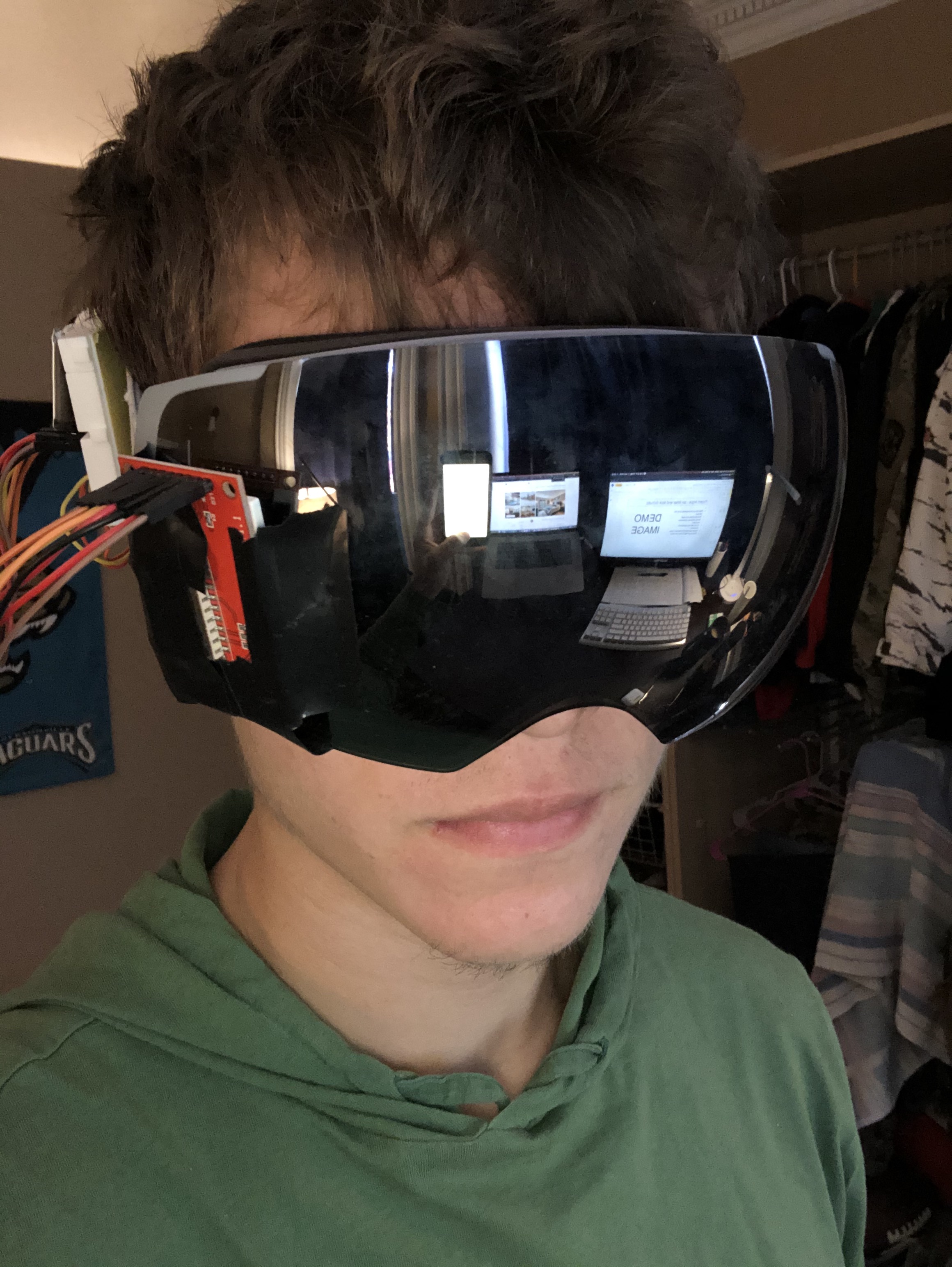Abstract
I am setting out to build a pair of smart glasses that displayed mission-relevant information on the lens of the operator’s eye-pro. These glasses would ideally eliminate the need to keep checking ATAK on a mobile device. That act of checking a mobile device is much more costly in terms of focus and time than viewing the same type of information would be via a pair of AR (artificial reality) glasses.
Problem Statement
When operators are on a mission, their focus and attention is incredibly valuable. During that mission, the operator is being overloaded with stimuli of all kinds. Any technology that interferes with that focus is costly. Any technology that helps parse through all of that stimuli and can free up some of that attention span is useful.
Proposal
I am aiming to build a pair of smartglasses that augment a soldier's situational awareness, without ever obstructing their FOV. The goal is to modify the commonly-worn Oakley glasses so that the soldier is required to change his typical routine as little as possible. These glasses will project an image from the arm of the glasses onto the inside of the lens. This projection will consist of data being sent from a server (mobile phone with ATAK running) that shows location and disposition of objects of interest on the battlefield. The goal of these glasses is to effectively replace the mobile-phone version of ATAK. Instead of interacting with and manipulating a phone screen in the field, the soldier will be able to see all the same data in a semi-permeable projection on glasses.
Challenges and Unknowns
Many commercial companies have tried building their own rendition of "smartglasses". For various reasons, almost all of them have failed spectacularly. They are expensive to build, hard to engineer, and the consumer use-case is not clear. It's not obvious that a pair of glasses that project either onto the interior of the lens or directly into the eye add real value to anyone's life. For soldiers, a huge challenge is making these glasses semi-permeable. This means that they need to be totally unobstructive when the soldier doesn't want them on. In the heat of battle, it's likely that a soldier won't want to be distracted by ANY electronic device, especially one that projects information that's likely irrelevant at the time. Semi-permeability is an absolute necessity and this is a difficult engineering challenge that will occupy a lot of my team's focus.

 OUSD Research and Engineering
OUSD Research and Engineering  West Point
West Point
Comments
dBlocher | 9 February 2021
This is a great vision (no…
This is a great vision (no pun intended). It might be worthwhile to sketch out the problem space and what within that you want to tackle. Is your goal to develop your own smart glasses (it sounds like that is true, and that would be a heavy lift) or to extend an existing commercial product - i.e. hack a pair of glasses to project ATAK data. How would a user interact with that data - i.e. turn on/off a display or select what is projected. In terms of design, one could also go the old google glass route and have the display not cover the entire FOV. Finally, it might be worth thinking about deployed environments - e.g. how much of an issue would dust be, and would that be a solvable problem.
achang7 | 12 February 2021
Ian, a pair of smart glasses…
Ian, a pair of smart glasses that look and are shaped like a pair of Oakleys would be a very elegant solution. As you've pointed out there are certainly a lot of challenges with engineering and building them, but I really like the idea of using a form factor that already exists. Many of the current smart glasses on the market are very clearly smart glasses, and any special equipment that singles out an operator is not ideal. Add on to the fact that an increased physical profile can make otherwise normal activities (i.e. using a comms headset, shouldering a rifle, employing NODs) much more difficult, and the form factor you're suggesting is very appealing.
You mention in your abstract replacing the ATAK smart phone, do you intend for your solution to also include a data input mechanism or are you intending for the smart glasses to be a display device only? Additionally, as you continue to look into the idea, especially with semi-permeability, that ability to adjust brightness and contrast across a wide variety of lighting conditions (think noon in the middle of the desert or a snow field vs anytime in a basement or cave) will be paramount.